Essential Steps to Take If You Spot Termites
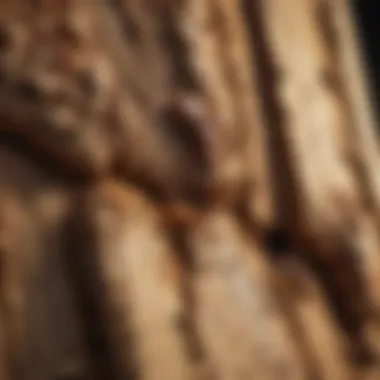

Intro
Encountering termites can be a daunting experience for anyone, especially for those involved in agriculture and farming. These pests, often invisible until it’s too late, have a knack for causing significant damage to crops, wooden structures, and even the very soil that supports the plants. It’s crucial to know how to react promptly if you spot signs of termite presence. Ignoring the issue can lead to a costly affair, both in terms of finances and resources.
This guide delves into the essential steps you should take upon discovering termites in your environment. You’ll learn how to identify these insects accurately, understand their behavior, and why seeking professional help might be your best bet. Moreover, staying one step ahead with preventive measures will help avoid the heartache of future infestations.
Overview of the Topic
Definition and Importance
Termites are social insects that are often categorized into different types, each with varying effects on agriculture. They can feast on decaying wood and other organic matter, making them essential for soil health. Yet, when they invade urban areas and farms, they pose a significant risk, particularly to wooden structures and crops. Understanding their role in the ecosystem while also acknowledging their destructive potential is critical for anyone looking to protect their investments and maintain healthy growth in agricultural practices.
Current Trends
Many people are becoming more conscious of pest management strategies that are environmentally friendly. With a growing emphasis on sustainable agriculture, farmers and professionals are exploring integrated pest management (IPM) techniques to manage termite populations without harming beneficial insects. Awareness and education on the use of natural predators, such as nematodes, are on the rise, paving a way for innovative treatments against these pests.
Key Techniques and Practices
Step-by-Step Guide
When faced with a potential termite sighting, following these steps can help.
- Identify the Species: First and foremost, ascertain whether you are dealing with termites or other wood-eating insects. Look for mud tubes, discarded wings, or sawdust-like frass.
- Avoid Disturbance: Minimize your interference with the area where you found the pests; disturbing them can scatter them, making it harder for you to control the invasion.
- Contain the Damage: If possible, isolate the affected area. Move any wooden equipment or structures away from the vicinity to avoid further damage.
- Contact Professionals: It is generally wise to seek expert help at this point. Professionals can provide a comprehensive inspection and determine the best course of action.
- Prevent Future Infestations: After addressing the current situation, implement preventive measures such as regular inspections and maintaining dry conditions around wooden structures.
Tools and Equipment Needed
Having the right tools on hand can make a significant difference in how you manage a termite issue. Some essential items include:
- Flashlight: For inspecting dark areas where termites may hide.
- Moisture meter: To detect high moisture levels in wood, which attract termites.
- Protective gloves: Safety first; always protect your hands when investigating.
- Spray or bait solutions: These can be useful for certain temporary or spot treatments until professional intervention can be secured.
Challenges and Solutions
Common Obstacles
Identifying a termite infestation can be tricky because signs can be subtle. In many cases, by the time people realize there's an issue, significant damage may have already occurred. Another piece to consider is the cost of professional extermination services; this can deter some from taking necessary actions promptly.
Innovative Solutions
With technology evolving, farmers can now access advanced detection methods like thermal imaging cameras. Using these can reveal hidden infestations that are not visible to the naked eye. Additionally, implementing a routine maintenance schedule along with sustainable practices can thwart infestations before they escalate. Protecting wooden structures using borate treatments is gaining traction, offering a proactive way to manage this pest problem.
"The best defense is a good offense; preventive measures can save not only your crops but also your peace of mind."
Ending
Understanding how to adequately respond when encountering termites is vital for anyone involved in agriculture. The knowledge gained from knowing about termite behavior, identification techniques, and preventive strategies can equip farmers and enthusiasts alike with the tools needed to handle these pests effectively. From spotting the warning signs to securing professional assistance, being proactive rather than reactive can curb the impacts of these pests.
Understanding Termites
Grasping the fullness of what it means to deal with termites is crucial for any agricultural professional or enthusiast. When one sees a termite, it’s not merely a moment of surprise; it marks the intersection between potential damage and proactive response. Understanding termites opens the door to numerous benefits, such as identifying risks early, implementing effective countermeasures, and maintaining the overall health of agricultural settings.
In the simplified terms of pest management, a thorough knowledge of termites encompasses their behaviors, ecological roles, and the myriad types one may encounter. These factors are intertwined with effective management practices, allowing for tailored solutions that consider both immediate and long-term needs.
For example, if a farmer comprehends the biology of termites, they can identify signs of an infestation sooner, potentially salvaging parts of an affected structure. On a broader scale, this understanding enhances strategic planning, influencing everything from crop storage designs to pest control methodologies.
Biology and Behavior of Termites
Termites are fascinating albeit frustrating creatures. Often mistaken as simple pests, their biology and behavior reveal complexities that demand respect. These insects belong to the order Isoptera and exhibit social behaviors akin to ants and bees. Termites live in colonies, which can range dramatically in size from a few dozen to millions, depending on the species.
Their structure is segmented into castes: workers, soldiers, and reproductive individuals. Workers are the backbone of the colony, foraging for food and maintaining the nest, while soldiers, often larger, defend the colony. The queens can produce thousands of eggs each day, ensuring the survival and expansion of their society.
Behaviorally, termites are generally nocturnal, preferring to forage and perform activities in darkness. This is a tactic that helps them avoid predators, such as birds and lizards. Also, they have a remarkable ability to consume wood due to the symbiotic relationship with protozoa in their guts, facilitating cellulose digestion.
Ecological Role of Termites
Termites might seem like merely nuisances, yet they hold a pivotal role in their ecosystems. Their ability to break down tough plant fibers and return nutrients to the soil is invaluable. This decomposition process not just enriches the soil but also enhances its structure, promoting healthy plant growth.
In natural settings, termites aerate the soil through their tunneling activities. This aeration allows for better water penetration and root development, which can significantly benefit trees and plants. Consequently, protecting termites from unwarranted destruction is not just good practice but an ecological imperative, aligning with sustainable agricultural practices.
Common Types of Termites
When faced with a termite situation, it's critical to identify the specific type involved. The common types include:
- Subterranean Termites: These are the most destructive, residing below the ground. Their presence is often indicated by mud tubes.
- Drywood Termites: As their name suggests, they invade dry wood structures, making them particularly problematic for homes.
- Dampwood Termites: Preferring moist wood, these termites typically infest decayed trees and logs, often indicating larger moisture issues in the environment.
- Formosan Termites: A super colony species, they can move rapidly through structures, causing significant damage.
Understanding these different termite types helps in planning both the immediate response to an infestation and long-term strategies in pest control. Each type harbors unique behaviors and tendencies that necessitate specific approaches, thus paving the way for informed, effective management decisions.
Identifying a Termite Infestation
Identifying a termite infestation is paramount for anyone who wishes to protect their home or property from the damaging effects of these pests. Early detection can save you a lot of heartache down the road, not to mention substantial costs associated with repairs. Often, termites remain hidden until they've unleashed significant destruction, making it crucial to recognize the signs before it's too late. Having a keen eye for indicators of termite activity can aid in taking swift action, whether that entails engaging pest control professionals or employing do-it-yourself strategies.
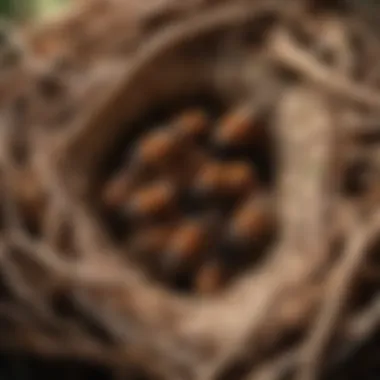
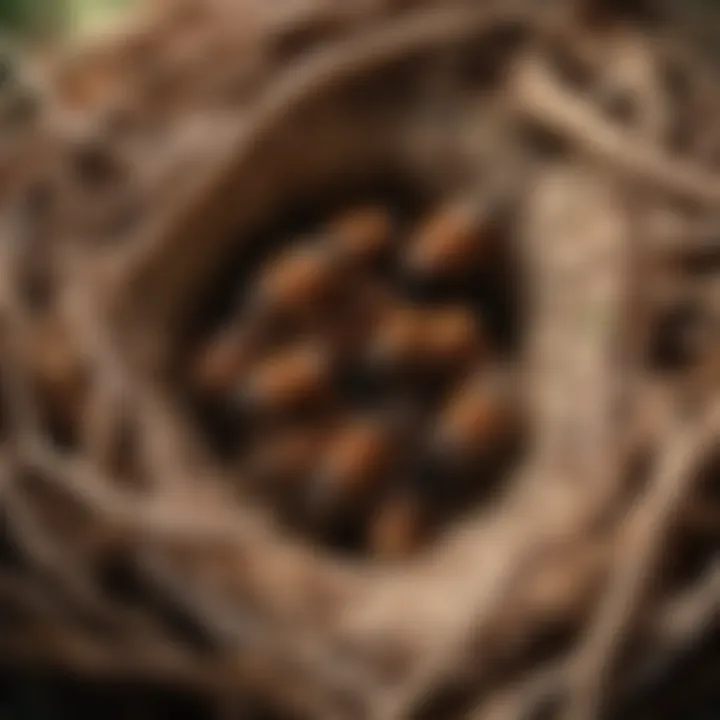
Signs of Termite Activity
Detecting termite activity isn’t always easy, but there are several signs to watch out for. Recognizing these signs can help establish whether there's an infestation lurking in your walls or beneath your floors.
Mud Tubes
Mud tubes are one of the more telling signs of termite presence. These small, pencil-sized tunnels made of mud and debris often run along walls or foundations. They're designed by termites to protect themselves from predators and dehydration while traveling between their food sources. A key characteristic of these tubes is that they often extend from the ground to the wood or moisture source the termites are targeting.
The recognition of mud tubes is beneficial because they often reveal the pathway to a larger problem. If you find them, it's a serious indicator of a possible infestation. However, not every mud tube needs to be a cause for panic, as sometimes they can be temporary structures, especially if the conditions or food sources change. Still, it’s a red flag that warrants further examination.
Wood Damage
Wood damage is a common and alarming sign of termites at work. As these pests feed on the cellulose found in wood, they can severely compromise the structural integrity of affected beams and furniture. One of the key indicators of wood damage is the hollowing or tunneling that appears in wood surfaces.
The advantage of recognizing wood damage early is that it allows for targeted interventions. If you notice such damage in your home, you can often make repairs while addressing the infestation immediately. Ignoring this sign can lead to deeper structural issues, potentially costing more in repairs and safety concerns.
Frass or Droppings
Frass, or termite droppings, is another telltale sign of an infestation. It resembles tiny wood pellets or sawdust and is often found near wood that has been consumed by the termites. The key characteristic of frass is that its presence can help differentiate termites from other wood-boring insects.
The unique feature of frass is not only its ability to indicate an active infestation but also its potential to be a red flag for the severity of the problem. Large amounts of frass might suggest that termites are thriving in your space, which can lead to quicker deterioration of the wood. Noticing frass early on offers the opportunity for prompt action and minimizes risks associated with prolonged infestations.
Differentiating Termites from Other Pests
As anyone involved in agriculture will tell you, distinguishing termites from other pests is paramount. Termites often get mistaken for ants, particularly flying ants during their mating season. Knowing the differences can save one a lot of trouble. For instance, termites tend to have straight antennae and a uniform body shape, whereas ants have bent antennae and a more segmented body. This crucial identification step ensures that appropriate measures are taken without unnecessary panic or misdirected efforts.
Visual Identification Techniques
Utilizing visual identification techniques can be immensely beneficial. It can be as simple as miners' behavior or their unique environmental signs. Even observing where they are most active—like around moisture-prone areas—can provide insights into how best to combat an infestation. Check for wings, soft body textures, and distinctive coloration to hone in on identifying termites.
In summary, recognizing the signs of termite infestation is integral to conserving a property’s integrity and value. Immediate attention to mud tubes, wood damage, and frass can significantly help mitigate potential damage. By effectively differentiating termites from other pests and employing visual identification techniques, one can take the necessary steps towards preventive measures.
Immediate Actions Upon Discovery
When you stumble upon these pesky critters, your initial reactions often dictate your next steps. Immediate actions are paramount for minimizing the potential destruction termites can cause. Time is of the essence; the longer termites infest your property, the greater the damage. Recognizing their presence isn't just about spotting them; it involves understanding the urgency and considering what comes next.
Taking swift action can save a structure from costly repairs. By assessing the situation accurately, securing the area, and documenting their presence, you create a foundation for effective pest management.
Assessing the Extent of the Infestation
Understanding just how bad the infestation is can feel a bit like staring down a rabbit hole. Start by checking areas where the termites are most likely to hide: wooden structures, furniture, and even beneath the flooring or behind the walls. The initial assessment should cover:
- Visible Damage: Look for soft, hollowed-out spots in wood structures and crumbling wood beams.
- Mud Tubes: These creepy avenues are often visible along walls, so make sure to check there.
- Presence of Frass: Droppings can be a big clue. Termites tend to poo where they work. Finding this debris can help pinpoint their activity.
The extent of the infestation will shape your response. If you find that your home has been significantly compromised, it’s time to roll up your sleeves and dig deeper.
Securing the Affected Area
Once you've got a handle on how deep this rabbit hole goes, you’ll want to secure the affected area. This means preventing any further access into those spaces where termites could wreak havoc. Here’s a checklist to help you get started:
- Restrict Access: If it’s safe, seal off the areas where termites are most active.
- Remove Food Sources: Wooden items in proximity? Remove them or elevate them off the ground to make them less accessible.
- Create a Barrier: Consider temporary barriers that can disrupt their movement, especially from places like attics or crawl spaces.
Additionally, keeping a cool head during this step is essential. Panic can lead to forgetting crucial steps that could otherwise help contain the problem.
Documenting Evidence of Infestation
In the age of technology, having photos and detailed notes can be a lifesaver down the line. You’ll want to keep a record as thoroughly as possible:
- Photographic Evidence: Snap pictures of the mud tubes, damaged wood, and droppings. These snippets can later serve as tangible proof of the infestation.
- Notes on Location: Mark where you found indicators of activity. This data will make life easier for pest control specialists, should you choose to call them in.
- Timeline of Discovery: Document when you first spotted signs of termite activity. This timeline can be crucial for pest control professionals to understand the severity of the issue.
"A good record is the first step toward taking action; don’t underestimate documentation."
Being thorough not only assists professionals but also gives you peace of mind moving forward. Collecting information systematically will prepare you for, should you need it, the next steps—whether that involves DIY solutions or seeking professional help.
Deciding on Professional Help
When it comes to tackling a termite issue, the decision to involve professionals can be a game changer. You might wonder, why the fuss over calling in an expert? Well, for starters, often these pests don’t just sit there waiting to be discovered. They can wreak havoc quietly until significant damage has been done. Unless you’re trained to spot the subtle signs of an infestation, you might overlook the depth of the problem.
Professional pest control services bring a wealth of knowledge. Their trained eyes can quickly identify whether you’re facing a minor nuisance or a full-blown infestation. Moreover, they will have access to advanced tools and treatments that aren’t available for the average homeowner. Plus, let’s not overlook the guarantee most of these services provide. They’ll often come back to assess the situation after treatment, ensuring the critters are truly gone.
When to Call Pest Control Experts
You need to call pest control experts if you discover signs of termite activity, especially if they’re causing visible damage to your property. If you’ve seen mud tubes, wood that’s crumbling, or droppings resembling small pellets, it’s a strong signal to pick up the phone.
Here are some key indicators for calling in the pros:
- Visible damage to wooden structures, including doors, windows, and beams.
- Presence of frass, which looks like tiny wood shavings or pellets in your home.
- Increasing signs of infestation over a short period, such as finding new mud tubes.
- Lack of expertise or confidence in dealing with the situation yourself.
Evaluating Pest Control Services
Once you’ve made the leap to call a pest control service, it’s vital to evaluate your options carefully. Not every service is created equal, and choosing wisely can affect the outcome of your battle against termites.
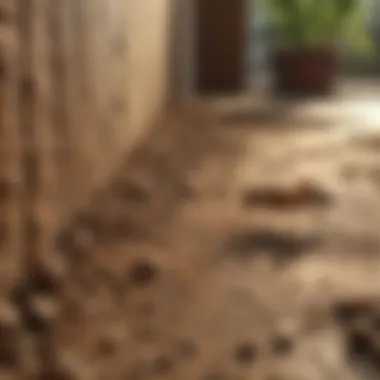

Certifications
Certifications are essential because they indicate that the pest control expert adheres to industry standards. Companies with recognized certifications often have staff that are trained and knowledgeable about the latest technology and safe handling practices. For instance, a service that holds certifications from entities like the National Pest Management Association shows that they are committed to professional conduct and up-to-date techniques.
One unique feature of such certifications is their emphasis on environmental safety. The guidelines these companies follow generally assure that hazardous materials are used appropriately and disposed of safely, minimizing risk to both your property and the surrounding ecosystem.
Reputation
Reputation speaks volumes about a pest control service’s reliability. A company’s reputation is built on customer satisfaction, experience, and transparency.
You might encounter services celebrated for their customer service or effectiveness in eradicating pests. A quick internet search can reveal what folks have to say—check reviews and ratings on platforms like Reddit and Facebook. A stellar reputation typically means fewer headaches for you down the line.
However, do keep in mind: just because a service is well-known doesn’t mean it’s automatically the best fit for your situation. Chat with friends or neighbors who might have dealt with similar issues; personal recommendations often trump internet reviews.
Methods Used
Every pest control service will have specific methods they employ for exterminating termites. Understanding these methods can better prepare you to make an informed choice.
For instance, some companies rely on chemical treatments to eliminate pests, while others might offer integrated pest management—using a combination of chemical, mechanical, and biological strategies to get rid of termites. This multifaceted approach often yields better long-term results.
When evaluating methods, inquire about their safety and effectiveness. Ask the service about their techniques and why they’ve chosen them. The unique feature here is that treatments vary in their impact on the environment and your household. Thorough professionalism will mean thorough communication on what to expect during the treatment process and beyond.
Expected Procedures by Professionals
When professionals come to handle a termite infestation, several key procedures are typically followed. First off, they will begin with a comprehensive inspection of your property. This helps them identify the extent of the infestation and where it’s most concentrated. They’ll look not just at visible signs but also in hard-to-reach spots like basements or crawl spaces.
After assessing the situation, they will outline a treatment plan tailored to your specific issue. This might include baiting systems, barrier treatments, or even fumigation in severe cases. It’s crucial to understand these procedures, as they impact not only how effectively they’ll resolve your termite issue but also how safe your home will remain during and after treatment.
DIY Termite Control Methods
Taking matters into your own hands can be a tempting prospect, especially when it comes to protecting your property from pesky pests like termites. DIY termite control methods offer immediate avenues to address an infestation before it becomes a full-blown crisis. They can save money and provide a sense of empowerment, allowing you to actively participate in safeguarding your environment. However, these methods come with specific elements and considerations that warrant a closer look.
Natural Remedies
Natural remedies can provide a gentle approach to controlling termites, steering clear of harsh chemicals. For instance, introducing nematodes, microscopic roundworms that prey on termites, can be an effective biological control method. Simply mix them into the soil around affected areas. Moreover, using diatomaceous earth, which consists of fossilized algae, can act as a barrier. When termites come into contact with it, it damages their exoskeleton and dehydrates them.
Other home-based solutions include:
- Orange oil: Contains d-limonene, which can kill and repel termites.
- Vinegar: A potent concoction of vinegar and water might not kill termites but can be useful in discouraging them when sprayed.
- Boric acid: A commonly recommended natural pesticide, it disrupts the termite’s digestive system when ingested.
Each of these methods comes with its own set of benefits and limitations, highlighting the importance of evaluating what suits your needs best.
Chemical Solutions and Their Safety
When considering chemical solutions as part of your DIY pest control strategy, safety must be at the forefront. Common chemical treatments include sprays and baits specifically designed for termite control. It’s crucial to read labels and respect the advised safety guidelines. Utilizing products that contain fipronil or hexaflumuron can be highly effective, yet they also require careful handling and storage, especially in homes with pets and children.
Be sure to assess:
- Application methods: Some products require a certain way of application for maximum efficacy.
- Reentry times: Understand how long you should stay out of treated areas.
- Environmental impact: Opt for products that have lower risks to non-target species and ecosystems.
This level of scrutiny not only protects you but also contributes to responsible pest management.
Limitations of DIY Methods
While DIY methods can provide a stopgap solution, they may not always be the silver bullet one hopes for. For one, these techniques can only address minor infestations or serve as preventive measurements. If the termite presence is substantial, DIY methods may merely delay the inevitable and may not ensure long-term efficacy.
Other limitations include:
- Inaccurate identification: Misidentifying the pest can lead you down the wrong path, wasting both time and resources.
- Limited reach: Some treatments may not penetrate the critical areas where termites lurk, such as in walls or underground.
- Regrowth issues: Even if you manage to tackle an infestation temporarily, untreated areas can result in a resurgence.
Effective pest management often combines both DIY techniques and professional intervention, allowing individuals to customize their approach while ensuring safety and success.
Long-Term Prevention Strategies
Implementing long-term prevention strategies is key to thwarting termite infestations before they can start. Rather than merely reacting to a problem, being proactive can save considerable time, money, and heartache in the future. In agriculture, where wooden structures and materials abound, termites can wreak havoc, making it critical to have strategies in place to keep these pests at bay.
Regular Inspections
Regular inspections are the cornerstone of any effective termite prevention strategy. It’s prudent to look for signs of termite activity every few months rather than waiting until you notice damage. Set aside time, especially during the warmer months when termites are most active, to check wooden structures, gardens, and surrounding areas. Consider the following steps during your inspection:
- Look for mud tubes on walls or foundations.
- Check wooden beams, posts, and furniture for hollow sounds or visible damage.
- Examine the moisture levels in your environment, since damp spots can attract termites.
Engaging a professional inspector can be wise for a thorough examination, ensuring that no signs are missed. Remember, in the world of termites, an ounce of prevention is worth a pound of cure.
Moisture Control Techniques
Moisture is a magnet for termites, making moisture control a vital component of prevention. Landowners should identify areas on their property susceptible to water accumulation. Here are some practical techniques to reduce moisture levels:
- Improve drainage: Ensure that gutters and downspouts direct water away from structures.
- Fix leaks: Repair any leaks in plumbing, as even a small drip can create a breeding ground for termites.
- Ventilation: Ensure that crawl spaces and attics are well-ventilated and dry.
Taking these steps not just minimizes moisture but also slows down the decay process in wood, which makes it less appealing to pests. Missing these details can turn into costly mistakes down the line.
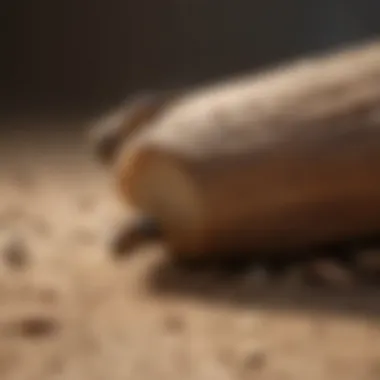

Maintaining an Uninviting Environment for Termites
Creating an environment that is not conducive to termite infestation should be a priority. The idea is to make your property less attractive to these wood munchers. Here are some suggestions:
- Store wood properly: Keep firewood and lumber at least 20 feet from your home and off the ground.
- Seal entry points: Check for gaps around plumbing or electrical lines and seal them to limit access.
- Landscape wisely: Trim tree branches and plants away from the structure, as touching surfaces can provide a bridge for termites.
Incorporating these measures into your routine will not only protect your property but also provide a psychological buffer against these relentless pests. Remember, it's easier to prevent an infestation than it is to deal with one once it's occurred.
Understanding the Risks of Termites
When considering termites, it’s crucial to acknowledge the extensive risks they pose to both residential and agricultural structures. These pests can silently wreak havoc, often going unnoticed until significant damage has occurred. Understanding the risks associated with termites not only aids in early identification but also emphasizes the urgency of taking preventive actions. By educating ourselves on the potential impacts of these infestations, we can better safeguard our investments and homes.
Potential Damage to Structures
Termites are notorious for causing substantial damage to wooden structures, compromising the integrity of buildings over time. This isn’t merely a question of minor repairs; significant infestations can lead to catastrophic failures in structural elements.
Here are the primary ways termites damage structures:
- Chewing Through Wood: Termites primarily feed on cellulose found in wood, causing beams, floorboards, and even furniture to weaken and crumble.
- Exposed Pipe and Wire Damage: In their search for food, termites might also damage piping and electrical wiring, which poses additional safety hazards, including fire risks.
- Foundation Weakness: They can trench through wooden components that support the foundation, undermining the stability of the entire structure.
"The damage inflicted by termites can often be likened to a slow poison, subtly and silently undermining a structure until it’s too late to effectively respond."
Economic Implications
The economic ramifications of termite infestations extend beyond just repair costs. These pests bring a cascade of financial burdens that can significantly impact both homeowners and agricultural businesses.
- Repair Funding: Homeowners can expect to fork out thousands of dollars, sometimes even tens of thousands, for major repairs. This hefty bill can cause significant financial strain.
- Insurance Dilemmas: Not all insurance policies cover termite damage, leaving homeowners to bear the entire cost. It’s essential to read the fine print of your insurance policy to understand your coverage.
- Ongoing Treatment Costs: Regular pest control treatments may be necessary to keep these pests at bay, creating additional ongoing expenses.
These financial burdens are not to be taken lightly, and they can lead to economic instability if not addressed promptly.
Impact on Property Value
Termites can heavily tarnish the perceived value of properties, affecting not just current owners but also future sales. Here’s how:
- Decreased Market Appeal: Homes that show signs of past infestations or lack adequate preventative measures may deter potential buyers, leading to prolonged listings and lowered offers.
- Disclosures During Sales: In most regions, sellers are legally required to disclose known pest issues, which can significantly diminish a property’s value if termite damage is revealed.
- Appraisal Challenges: Appraisers may reduce a property’s appraised value based on termite presence or past damage, complicating the financial aspects for sellers.
The Role of Technology in Termite Control
When it comes to battling termites, technology is a game changer. These pests can wreak havoc on structures, making swift action vital. Recent advancements in detection and treatment options can make all the difference. Understanding the role technology plays helps agriculture professionals and enthusiasts safeguard their properties more efficiently.
Technological innovations don’t just enhance detection and treatment; they also provide longer-term solutions and strategies that empower stakeholders to manage infestations proactively. This section will delve into cutting-edge detection technologies, innovative treatment methods, and emerging trends that could shape pest management practices in the future.
Advancements in Detection Technologies
Detection is the first step to effective termite control. Over the years, techniques have evolved significantly. Traditional visual inspection can be time-consuming and might miss hidden colonies. Enter modern technologies:
- Acoustic Sensors: These devices can pick up the sounds termites make while chewing wood. By placing sensors in targeted areas, pest management professionals can gain valuable insights into termite activity even before visible signs appear.
- Infrared Thermography: This method detects temperature variations in structures, indicating potential termite infestations. Termites often leave a trail of heat due to their frass and movement, which this technology can reveal, allowing for swift targeting of problem areas.
- Moisture Meters: Since termites thrive in damp environments, moisture meters help professionals detect favorable conditions for infestations. By measuring the moisture content in wood and surrounding structures, technicians can identify at-risk areas and take preventative action.
These advancements not only increase the chances of early detection but also minimize damage costs associated with delayed actions.
Innovative Treatment Solutions
Once termites are detected, the next step is eradication. Several innovative treatment options have emerged in recent years, shaking up traditional pest control approaches:
- Boric Acid Treatments: This naturally occurring pesticide has garnered popularity due to its effectiveness and relative safety. When applied in target areas, boric acid disrupts the nervous system of termites, leading to their demise without posing significant risks to humans or pets.
- Nanosilver Technology: Research has shown that nanosilver particles can be effective in repelling termites and preventing colony growth. This technology symbolizes a shift towards more sustainable pest control solutions, which resonate well with environmentally conscious farmers and property owners.
- Bait Systems: Modern bait systems utilize slow-acting insecticides. When termites take the bait back to their colony, it gradually kills the entire community. This method not only effectively eradicates termites but also minimizes collateral damage to unaffected areas.
Adopting these innovative solutions can be a game-changer, especially for those with existing infestations and for those looking to invest in preventative measures.
Future Trends in Pest Management
Looking ahead, the pest management landscape is bound to change even more. Here are some trends worth keeping an eye on:
- Data-Driven Approaches: The integration of data analytics into pest management will likely impact decision-making processes. Collecting data from multiple sources, including real-time environmental conditions, will help tailor pest management strategies to specific scenarios.
- Precision Pest Control: Similar to precision agriculture, termite control will leverage technology to apply treatments only where needed, thus maximizing efficacy and minimizing chemical use. Drones and GPS technology can enhance the precision of inspections and treatments.
- Integration of AI: Artificial intelligence could revolutionize how professionals assess infestations. Machine learning algorithms might analyze inspection data, improving prediction models and suggesting effective treatments.
As technology continues to advance, so too does the opportunity for more effective and sustainable termite control strategies.
Education and Awareness
Education and awareness are pivotal in the realm of termite management. Understanding termites is not just about knowing their biology or the destruction they can cause; it’s about empowering individuals, especially those in agriculture, with the knowledge to act effectively against these pests. By educating ourselves and others, we equip ourselves with the ability to recognize early signs of infestation, thus preventing potential damage to crops and structures.
Importance of Staying Informed
Staying informed about termite behavior, seasonal activities, and most effective control methods is crucial. This proactive approach can mitigate the risk of significant losses. Regularly updating one’s knowledge can involve attending workshops, participating in local agricultural meets, or simply reading reputable sources. The knowledge gained allows farmers to:
- Identify signs of termite presence early, such as mud tubes or wood damage.
- Understand the ecological roles termites play, which can sometimes benefit soil health in agricultural practices, balancing pest control with environmental stewardship.
- Implement timely measures to prevent infestations before they escalate, such as routine property inspections or applying preventative treatments during peak activity times.
Fostering a culture of awareness can also lead to community initiatives, where farmers and agricultural workers share experiences and strategies to combat termite problems effectively.
Training for Professionals
Training for pest control professionals is equally important. Not every pest control service operates with the same understanding or methods. It's imperative that professionals receive ongoing education to stay current with the most effective technologies and strategies. The following areas are central to this training:
- Identification Skills: Professionals should be adept at distinguishing between termite species, as different species may require unique approaches for effective management.
- Treatment Techniques: Modern techniques evolve rapidly. Training must encompass newer, environmentally-friendly chemicals, alternative remediation methods, and advanced detection technologies.
- Regulatory Compliance: Knowledge of local and state regulations regarding pesticide use ensures that treatment options are safe and legal.
Through workshops and certifications, pest control experts can hone their skills, providing farmers with confidence in the services they utilize. This investment in education not only protects individual farms but contributes to the overall health of the agricultural community, making it a vital aspect of any comprehensive termite management strategy.
Staying educated about termites and investing in training can prevent a lot of headaches down the line. When the knowledge runs deep, it often translates into less damage and more resilient farming practices.



